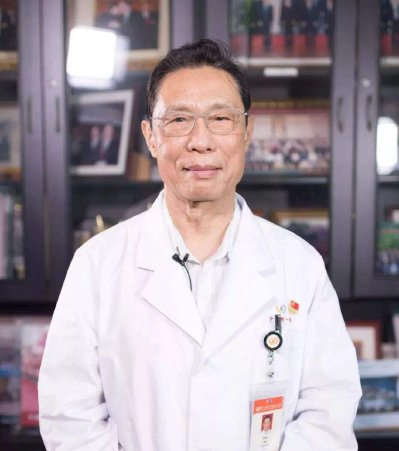|
||||||||||
| Home Nation World Business Opinion Lifestyle ChinAfrica Multimedia Columnists Documents Special Reports |
|
||||||||||
| Home Nation World Business Opinion Lifestyle ChinAfrica Multimedia Columnists Documents Special Reports |
| China-Africa Cooperation in Fighting COVID-19 |
| Calm Presence |
| Top respiratory expert reassures the public with professionalism during the novel coronavirus epidemic |
| By Hu Fan ·2020-02-14 |

Zhong Nanshan
On January 18, 84-year-old respiratory expert Zhong Nanshan took a train to Wuhan, central China’s Hubei Province, as confirmed cases of a disease caused by a novel coronavirus kept mounting in the city amid public concern about the nature and scale of the outbreak. The Spring Festival traffic rush had begun at the time and Zhong managed to get a seat in the dining car of the packed train.
A picture of him taking a nap in his seat went viral across China’s social media and news of Zhong traveling to Wuhan in his expert capacity brought a sense of assurance to the public, with many saying that a solution was assured with his involvement.
Zhong made a name for himself 17 years ago in another similar emergency against the Severe Acute Respiratory Syndrome (SARS), an epidemic that started in South China’s Guangdong Province and eventually claimed over 900 lives worldwide, including those of many medical practitioners. While doctors in many hospitals feared the very contagious and deadly disease, he demanded that patients in critical condition be sent to his team in a Guangzhou hospital.
During that fight against SARS, he formed China’s first medical expert team and built the first isolation ward for the disease. He led the draft of China’s first clinical standard for the disease and was the first to call for national and worldwide collaboration. His team created a record by working for 193 consecutive days, treating 302 SARS patients.
In January this year he was urgently dispatched to Wuhan as a member of the second group of experts sent by the National Health Commission (NHC), to find out what was really happening in the city, so that decisions could be made at the national level to react to the outbreak. The first group of experts sent to Wuhan had not been conclusive about the nature of the transmission of the disease.
After his arrival in Wuhan, he spent a busy day attending briefings and visiting hospitals in the city, which he later warned were not to be visited unless it was for the extremely important. On January 20, he appeared at a press briefing in Beijing as NHC’s head of high-level experts, where he confirmed human-to-human transmission of the virus and called for immediate actions to contain its spread.
This marked a turning point of reaction toward the disease. Top-level response was initiated among China’s provinces in the following days and medical teams began to be sent to Wuhan’s aid.
On January 24, a team was formed by the Ministry of Science and Technology to provide technological support and Zhong was appointed head of the team. In addition to finding solutions for the virus, he guided the public to avoid panic, ensured awareness about protection measures and updated the latest infection progress to boost public confidence.
Although elderly, Zhong is highly active and takes part in research and clinic practices, as well as a daily fitness routine. This allowed him to join the frontline personnel who worked intensely spending long hours away from home at the expense of time with family and friends.
Despite the severity of the epidemic, Zhong is optimistic that the virus can be defeated. In an interview with Xinhua News Agency, the morale of Wuhan citizens in fighting the disease reduced him to tears. “With help from the whole country, Wuhan will get over this, because it is a city of heroes,” he said.
|
||||||||||||
| About Us | Contact Us | Advertise with Us | Subscribe |
| Copyright Beijing Review All rights reserved 京ICP备08005356号-5 京公网安备110102005860号 |